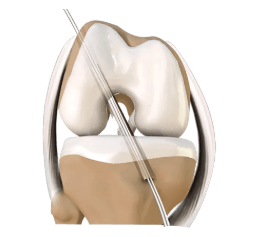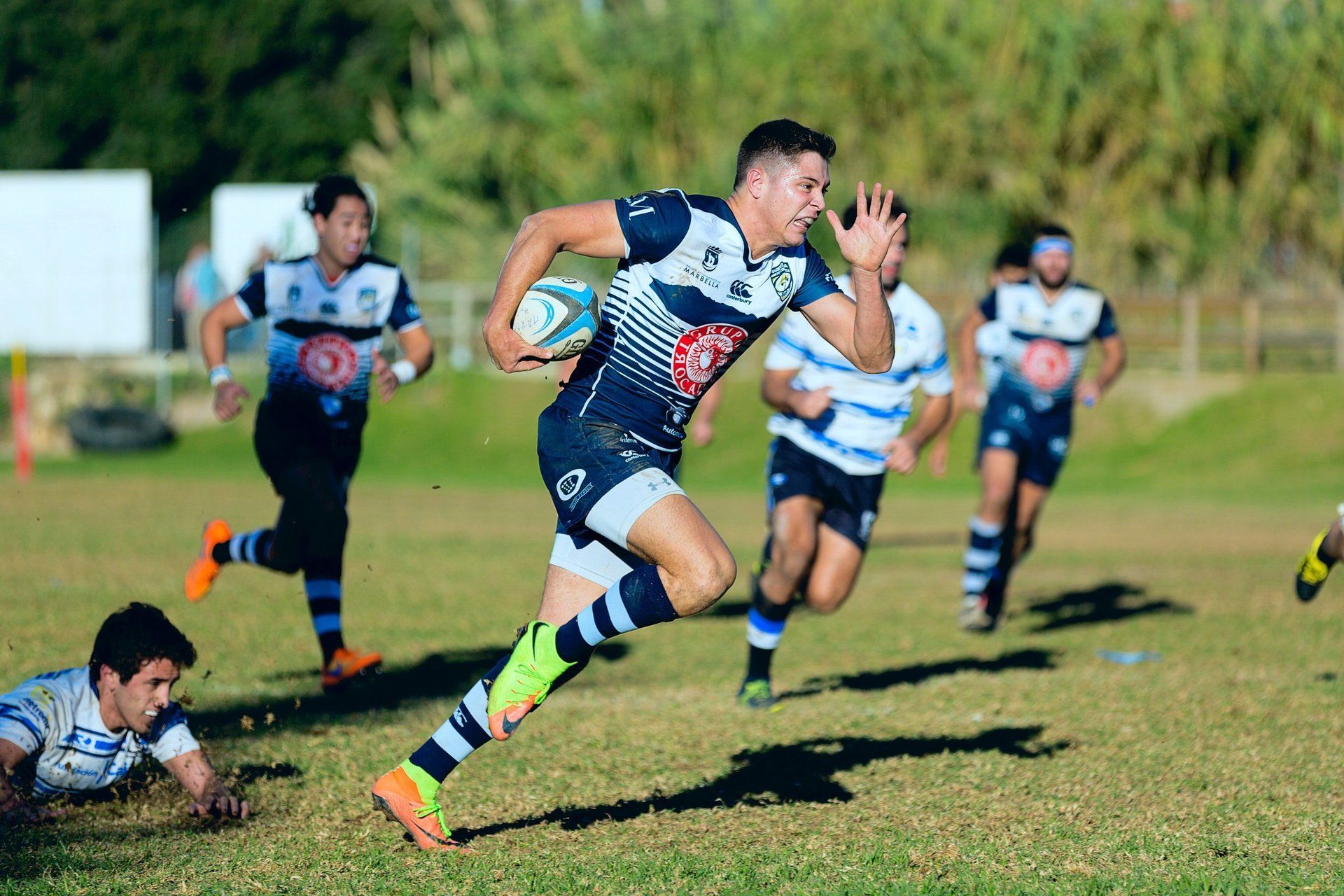ACL Reconstruction
What is an Anterior Cruciate Ligament (ACL)?
The anterior cruciate ligament is one of the major stabilizing ligaments in the knee. It is a strong rope- like structure located in the centre of the knee running from the femur to the tibia.
When this ligament tears, unfortunately, it doesn't heal and often leads to the feeling of instability in the knee.
ACL reconstruction is a commonly performed surgical procedure and with recent advances in arthroscopic surgery can now be performed with minimal incisions and low complication rates.
What Does the ACL Do?
The ACL is the major stabilizing ligament in the knee. It prevents the tibia (shin bone) moving abnormally on the femur (thigh bone).
When this abnormal movement occurs, it is referred to as instability and the patient is aware of this abnormal movement.
Often, other structures such as the meniscus, the articular cartilage (lining the joint) or other ligaments can also be damaged at the same time as a cruciate injury and these may need to be addressed at the time of surgery.
- Most injuries are sports-related involving a twisting injury to the knee.
- It can occur with a sudden change of direction, a direct blow, e.g., a tackle, landing awkwardly.
- Often there is a popping sound when the ligament ruptures.
- Swelling usually occurs within hours.
- There is often the feeling of the knee popping out of joint.
- It is rare to be able to continue playing sports with the initial injury.
What are the symptoms of ACL tears?
Once the initial injury settles down, the main symptom is instability or giving way of the knee. This usually occurs with running activities but can occur with simple walking or other activities of daily living.
How to Diagnose ACL Tears?
The diagnosis can often be made from history: a "pop", immediate swelling and inability to keep playing sport.
Examination reveals the instability of the knee if adequately relaxed or not too painful.
An MRI (Magnetic Resonance Imaging) can be helpful if there is a doubt, or to look for damage to other structures within the knee.
At times the final diagnosis can only be made under an anaesthetic or with an arthroscopy.
What are the Treatment Options?
Initial
Initial management post-injury includes:
- Rest
- Ice
- Elevation
- Bandage
Long Term
Not everyone needs surgery. Some people can compensate for the injured ligament with strengthening exercises.
It may be advisable to give up sports involving twisting activities if you have an ACL rupture and do not have surgery.
Episodes of instability can cause further damage to important structures within the knee that may result in early arthritis
What are the Indications for ACL Surgery?
Suitable candidates for ACL Reconstruction Surgery include:
- Young patients wishing to maintain an active lifestyle.
- Sports involving twisting activities, e.g., soccer, netball, football or giving way with activities of daily living.
- Physically demanding occupations, e.g., policemen, firemen, roofers, scaffolders.
It is advisable to have physiotherapy prior to surgery to regain motion and strengthen the muscles as much as possible.
How is an ACL Reconstruction Performed?
Surgery is performed with an overnight stay.
Surgical techniques have improved significantly over the last decade, complications are reduced and recovery much quicker than in the past.
The surgery is performed arthroscopically. The ruptured ligament is removed and then tunnels (holes) in the bone are drilled to accept the new graft.
This graft which replaces your old ACL is taken from your hamstring tendons.
The graft is prepared to take the form of a new ligament and passed through the drill holes in the bone.
The new tendon is then fixed into the bone with various devices to hold it in place, while the ligament heals into the bone (usually 6 months).
The rest of the knee can be clearly visualized at the same time and any other damage is dealt with if needed, e.g meniscal tears.
The wounds are then closed and a dressing applied.
What do the Post-operative Steps Include?
Pain Management
You will have pain medication by tablet.
Wound Care
Leave any waterproof dressings on your knee until your post-op review.
- You can put all your weight on your leg.
- Put ice on the knee for 20 minutes at a time, as frequently as possible.
Post-op review
The first review will usually be after 10-14 days with your GP.
Physiotherapy
You will be seen by a Physiotherapist who will teach you to use crutches and show you some simple exercises to do at home.
Exercise and therapy can begin after a few days or can be arranged at your first post-op visit.
Complications
If you have any redness around the wound or increasing pain in the knee or you have a temperature or feel unwell, you should contact Dr Ferguson’s office or your GP as soon as possible.
Why is Rehabilitation for ACL Reconstruction Essential?
Physiotherapy is an integral part of the treatment and is recommended to start as early as possible. Pre-operative physiotherapy is helpful to better prepare the knee for surgery. The early aim is to regain range of motion, reduce swelling and achieve full weight-bearing.
The remaining rehabilitation will be supervised by a Physiotherapist and will involve activities such as exercise bike riding, swimming, proprioceptive exercises and muscle strengthening. Cycling can begin at 2 months, jogging can generally begin at around 3 months. The graft is strong enough to allow sport-specific training at around 6 months. Competitive return to sports is not until 9-12 months.
The rehabilitation and overall success of the procedure can be affected by associated injuries to the knee such as damage to the meniscus, articular cartilage or other ligaments.
The following is a more detailed rehabilitation protocol useful for patients and physiotherapists. It is a guide only and must be adjusted on an individual basis taking into account pain, other pathology, work and other social factors.
If you have an ACL reconstruction then Dr Ferguson will provide you wiith a full rehabilitation program.
ACL Reconstruction Rehabilitation Program
What are the Risks & Complications of ACL Reconstruction?
Complications are not common but can occur. Prior to making the decision to have this operation, it is important you understand these so you can make an informed decision on the advantages and disadvantages of surgery.
These can be medical (Anaesthetic) complications or surgical complications including: bleeding, infection, blood clots, stiffness, pain, numbness, swelling, re-rupture.
Summary
Anterior Cruciate Ligament reconstruction is a common and very successful procedure. It is generally recommended in the patient wishing to return to an active lifestyle, especially those wishing to play sports involving running and twisting.
The above information hopefully has educated you on the choices available to you. If you have any further questions you should consult with Dr Ferguson and his Staff.





